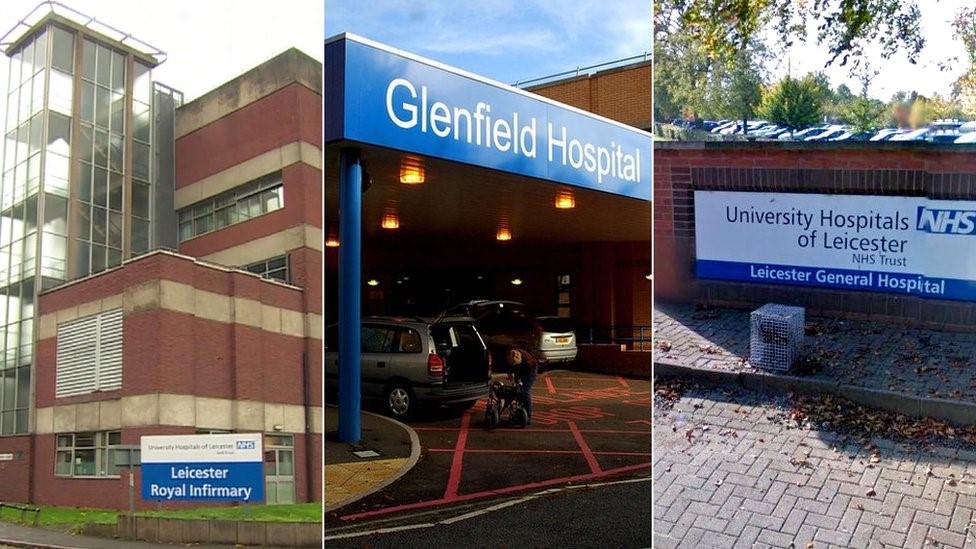Leicestershire’s highly secretive NHS leaders have been at it again. A scheduled 2-hour meeting on June 8 to nod through a 147-page Decision Making Business Case (DMBC) to kick start their plans for reconfiguration and new hospital buildings included an hour for questions from the public – not one of which was answered, despite the session dragging on for almost FIVE hours.
Nor were long drawn-out proceedings any indication of rigorous scrutiny of the flawed Business Case – not a single member of any of the three CCGs present had a single objection or critical word to say. Only one non-executive member subsequently privately confessed to having not read the document – but others were doubtless happy to keep their ignorance of the DMBC to themselves.
The DMBC had been in the hands of CCG members for weeks, but was shamefully only issued to the public after the meeting had started, for fear that somebody might be able point to its weaknesses and disrupt the carefully choreographed PR effort to promote the £450m-plus project through a docile local news media.
The joint meeting of CCGs covering Leicester, Leicestershire and Rutland was also supposed to take note of a 760-page document analysing the public response to the consultation – which had only been released publicly on May 26 – having been kept under wraps for two months.
This latest effort to suppress any public scrutiny of plans was challenged by Save Our NHS Leicestershire and publicly criticised by Patrick Kitterick, chair of the joint scrutiny committee in Leicester and Leicestershire, who warned (in vain) that “To rush to a decision without the proper opportunity for public scrutiny is a mistake which I would urge the Board Meeting to avoid.”
One obvious reason for the reticence in releasing this document is that it exposes the failure of the project leaders to change almost any aspect of the proposals in response to the views expressed by the local public in the consultation.
One exception is the welcome decision to fund a minimum 3-year trial of the Freestanding Midwife Unit rather than the inadequate proposal of a 1-year trial. The extended trial had been demanded by campaigners and Leicester City Council’s Scrutiny Committee, and the need to retain the Unit, currently provided in Melton Mowbray, was raised by the largest number of public comments on the consultation.
However the DMBC leaves nagging doubts as to how the unit is to be funded, or indeed if it will be built at all.
The consultation left other serious questions unanswered, not least on the likely final cost of the plan as a result of Covid and its aftermath, changes in government and NHS policy on a number of issues, and the belated decision to plan bed numbers through to 2032 rather than the ridiculously short time frame to 2024 – by which time the new hospital will not have been completed.
Project leaders now admit that to preserve the existing provision of 2.4 acute beds per 1,000 population the Trust will need at least 300 and as many as 800 additional beds on top of the DMBC proposals. These have not been costed.
Nor have the changes required to adapt hospital wards and clinical areas to post-Covid infection control. The DMBC concedes that “because of the uncertainty … it is not currently possible to assess the impact on the capital costs.” So the CCGs signed off a pig in a poke.
It’s clear to all that the £453m funding that has been promised by the government and from charitable funding will not be enough to complete the project – but far from clear how much extra, if any, can be obtained from the government. To make matters worse the current plan will also drain the Trust of capital funding, leaving a £33m bill for chronic backlog maintenance.
If no extra cash comes from the government parts of the project will need to be scaled back or axed – with the most likely first casualty being the Midwifery Unit. No wonder they were so keen to keep the plan under wraps.
The next challenge for project leaders is to produce an Outline Business Case – for which these awkward questions need to be answered.
The campaign goes on: it’s not over till it’s over!
Dear Reader,
If you like our content please support our campaigning journalism to protect health care for all.
Our goal is to inform people, hold our politicians to account and help to build change through evidence based ideas.
Everyone should have access to comprehensive healthcare, but our NHS needs support. You can help us to continue to counter bad policy, battle neglect of the NHS and correct dangerous mis-infomation.
Supporters of the NHS are crucial in sustaining our health service and with your help we will be able to engage more people in securing its future.
Please donate to help support our campaigning NHS research and journalism.



Comments are closed.